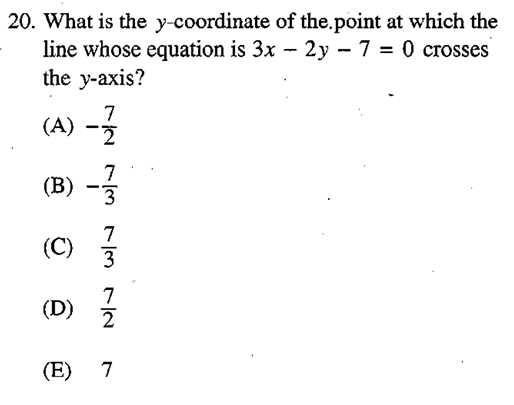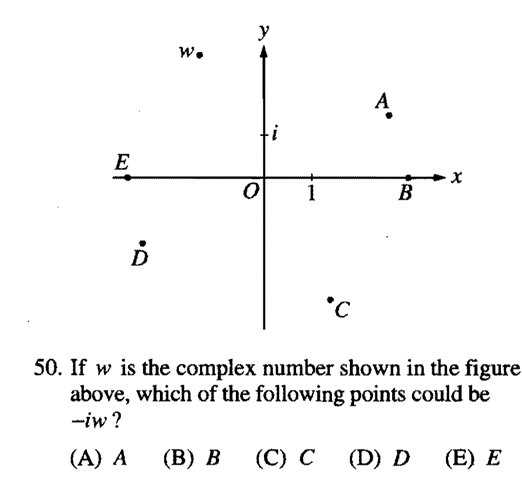UPDATE: As of June 2021, the SAT Subject Tests are no longer administered. For more on the cancellation of all Subject Tests, see our post here.
Let’s take a look at the SAT Math Levels I and II Subject Tests.
What do the Math Subject Tests Look Like?
Both Math Subject Tests consist of 50 questions each. They are presented in increasing order of difficulty, and students are given 60 minutes to complete the test. The Math I Subject Test is designed to test what the average high school student would be exposed to in 7th-9th grade math classes: basic algebra, functions, geometric properties of shapes, plotting lines, working with everyday word problems, and interpreting graphs. The Math II exam contains all of that subject matter along with a slew of more difficult topics: probability, combinatorics, advanced trig, plotting hyperbolic functions, working with limits and asymptotes, etc. Below are two examples of problems from past exams:
Math I:

Math II:

How is the exam scored?
Each student receives a raw score that is converted to a scaled (200-800) score. Each correct answer counts as +1 raw point, a wrong answer counts as -1/4, and omitted questions have no effect on a student’s score. For example, if a student got 36 questions correct, 12 wrong, and omitted two, she would have a raw score of 36 – (12)(1/4) = 33. Students do not need a perfect raw score to get a perfect 800. On a recent exam, any raw score above a 44 corresponded to an 800. A raw score of 35 corresponded to a 700, and a 24 raw score was the equivalent of a 600.
What Skills from School Will Help Me on the Test?
While taking advanced math classes is great, the SAT Subject Tests are not primarily a test of high-level mathematical content. Instead, it’s more a test of the solid mathematical habits that can take some time to develop. Students should strive to take a math class every semester in high school so that when it comes time for SAT-specific prep, their basic algebra and equation solving skills are solid.
Find out exactly how much strategy and content from your current AP or IB courses can be applied to the SAT Math Subject Tests! Download our handy guides below:
Are There Any Tricks I Can Use to Immediately Improve My Score?
- Write as much of your thinking as possible down in the test booklet. Write out formulas and don’t skip steps. Mark up geometric figures. Doing this consistently will help you avoid mistakes and see new pathways to answering questions.
- Make things as tangible as possible. Many Math I and II questions contain elaborate language and lots of fancy variables. In some cases, it’s best to simply pick values for these variables in order to make the problem easier to work with.
- Make educated guesses. While the geometric figures are not necessarily drawn to scale, they are usually pretty close. If you’re completely stuck on a problem asking for an angle measure, and the options are 30, 45, 60, 90, or 120 degrees, you can probably eliminate at least two just by looking at the figure.
I’m an International Student. Any Tips for Me?
The biggest difficulties for international students lie in different math vocabulary and slightly different content focuses. For example, simple terms known in the UK as “gradient” and “modules” are referred to as “slope” and “absolute value” in the U.S. Similarly, the Math II Subject Test tends to test advanced trigonometry in ways that are more creative than the ways it is tested in the IB curriculum. On difficult geometry problems, there often isn’t a set method to solve the problem. Students who try many different possibilities are usually rewarded with one of them.
Main Takeaways
- You have a limited amount of time. Feel free to prioritize the types of questions that you excel at, with the caveat that later questions tend to be more difficult than earlier ones.
- There’s no benefit to randomly guessing or bubbling in answer choices. If you feel lost or stuck on a problem, omit it and return to it later if you have time.
- Put as much of your thought process down on the page. This acts as a second barrier to careless mistakes.





